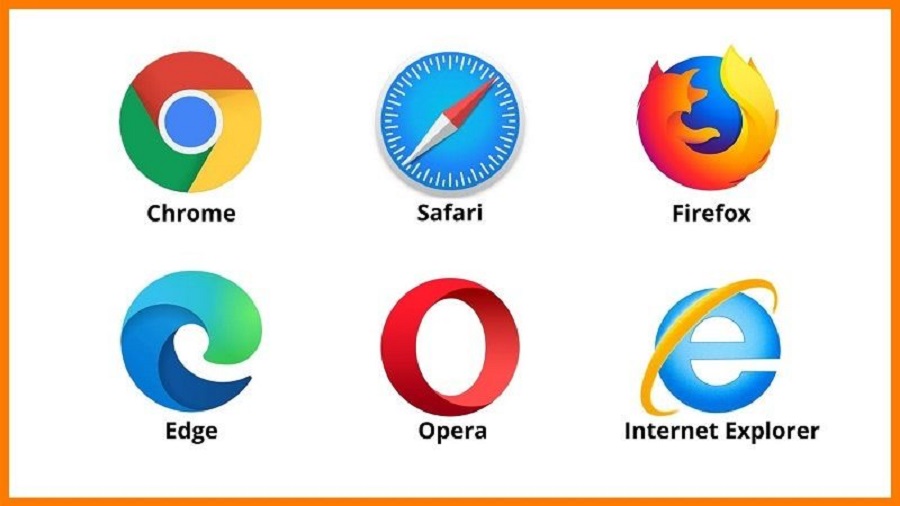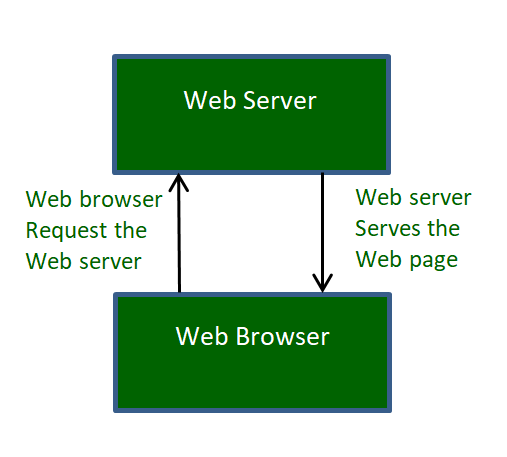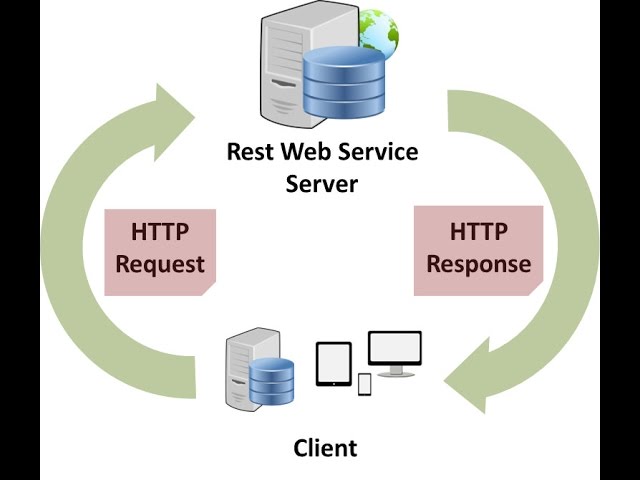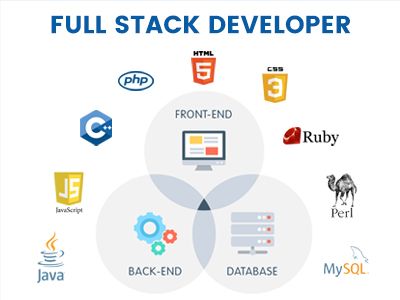How Web Browsers Impact Web Development in 2022

When the internet was not accessible to people, they were looking for a system to search for some information on the computer. They remained unaware of happenings worldwide and used to collect information in encyclopedias. When people wanted to share a piece of information, they wrote a note on a page and post on a wall for others to see.
A web or internet browser is application software that fetches content from a storage device and shows it to a computer user. Users can adjust their homepage, default web page colors, and search engine. The web browser personalizes the browser with large extensions and lets users set bookmarks and manage passwords.
Microsoft has a dominant contribution in ranking the browser in its market as it integrated the Internet Explorer with Windows operating system. Microsoft has enabled the web browsers to be configured with a default menu and the default menu is characterized as options, settings, or preferences.
Importance of web browsers that impact the web development:
All the web browsers have their own requirements and features that may affect the usage of web designers. These browsers have unique coding languages like Cascading Style Sheets, Hypertext Markup Language, and Extensible Markup Languages which play their role in creating web pages.
When users type a web address and enter it without confirming its correctness, the browser makes sense of what it should show them on the screen. A web browser manages hypertext transfer protocol, a suite model for hypermedia, distributed, and collaborative information systems.
In terms of web development, a browser allows its users to go to different websites and perform multiple activities like linking one site to another, printing and sending emails, and viewing multimedia. The web browser provides you with all the images, videos, and multimedia content when you load the requested web page in the form of a Uniform Resource Locator.
 Role of a Web Server:
Role of a Web Server:
When users search for various web pages, web browsers are responsible for communicating with the web server. Web server and browser collectively work where the web page’s relevant information and instruction are found. Generally, this information and assets are found on a remote server.
 A web server is responsible for showing web content to the users via processing and sharing web pages. It manages and enables web users to find hosted files, including hypertext transfer protocol components. It acts under the client-server model and sends a request to a resource from a server program.
A web server is responsible for showing web content to the users via processing and sharing web pages. It manages and enables web users to find hosted files, including hypertext transfer protocol components. It acts under the client-server model and sends a request to a resource from a server program.
Process of a Web Server:
The web browser follows an HTTP request when you load a website’s content. The web browser translates the URL of web pages and checks the IP address of a website. The URL translation prepares the webserver to host the site’s files and this translation can be done by searching a cache or Domain Name System.
The web server accepts the HTTP request; it finds the server files to fetch the required data for the user. It sends the site files back to the web browser for approval and the web user views the website content. When the requested file fails to get approval, the HTTP server sends a notification to the web browser with an error message, called a 403 or 404 error.
It is also possible that the web server does not receive approval from another server and a 504 error occurs, acting as a gateway or proxy. The main function of the web server is to host various websites or applications, manage the file transfer protocol requests, and send or receive emails accordingly.
 A static web server includes HTTP software and a PC that returns the website’s file to the relevant web browser. A dynamic web server checks the hosted files and updates them through an HTTP server before sharing them. You may ask the web hosting provider to run the servers smoothly and this process includes caching, performing backups, and security maintenance.
A static web server includes HTTP software and a PC that returns the website’s file to the relevant web browser. A dynamic web server checks the hosted files and updates them through an HTTP server before sharing them. You may ask the web hosting provider to run the servers smoothly and this process includes caching, performing backups, and security maintenance.
Processes to Improve Web Development:
Web browsers filter the incoming responses by supporting HTTP protocols and rank web development in the following ways:
=> Front-end Web Development
Web browsers make the front-end development responsible for managing icons, colors, and images. The front-end development is accountable for how a website appears on a desktop, phone, or tablet. It works with programming languages in Javascript or HTML and gets responses in these languages. Web browsers ensure the displayed websites are well optimized and secured for users’ perspectives.
 => Back-end Web Development
=> Back-end Web Development
Web browsers stimulate the back-end web development to create and maintain the code used to run a website. This unique code ensures that data flows smoothly and all the transactions within the web are done securely. It interprets the response in MySQL or PHP and works for networking communities that are designed to share coding techniques.
 => Web Programmer
=> Web Programmer
Web programmers ensure the user interface is attractive to site users, and this activity is helped by front-end and back-end programmers. Front-end programmers of web browsers create different pages and back-end programmers edit the server code that can be run on the website.
 => Webmaster
=> Webmaster
Web browsers engage the webmaster in managing websites of organizations like design, coding, security, and the way instruction is sequenced on the site. The webmaster ensures the website is appealing and suitable for the organization’s business strategy.
=> Web Content Developer
A content developer generates the content that appears on the website, including news stories, product descriptions, images, posts, and videos. Content developers can potentially work with web browsers regarding search engine optimization.
 => Full-stack Web Development
=> Full-stack Web Development
Full-stack web development takes the responsibilities of front-end and back-end web development depending on the complexity of a website. It recognizes the cutting-edge technologies that may improve the strengths of websites’ business. It is accountable for the server and user interface end regarding troubleshooting and accelerating the redesign.
Which Browsers impact Web Development?
Following are the web browsers influencing the web development:
– Mosaic
Mosaic is a web browser that has been discontinued due to the popularity of other browsers. It is the browser to show images inline without an open source software. It contains bookmarks and icons with the support of full-time programmers. It supports various internet protocols like telnet, NNTP, HTTP, gopher, WAIS, FTP, and Archie.
– Google Chrome
Google chrome is a cross-platform web browser and open source program to run web-based applications. It merges the address bar and search box and lets you sign in with your Google accounts. It allows the users to manage bookmarks that enable different web pages across various devices.
– Mozilla Firefox
Mozilla Firefox is an open source web browser available for iOS and Android. It can track thousands of data trackers with enhanced tracking protection tools. It offers a secure internet connection and a dedicated privacy browser. It has a dominant speed and allows the users to do multiple tasking.
– Microsoft Edge
Microsoft edge is a cross-platform browser that enables you to fetch bookmarks and the history of your daily usage. It loads web pages with high security and provides shortcuts to move to the most visited sites in less time. It is a dominant browser in terms of functionality as it integrates with EdgeHTML, which empowers it internally.
– Internet Explorer
Internet Explorer is a graphical web browser that supports HTML, DOM, XML, and CSS. It allows favicons to run in static GIF, PNG, and native icon formats. It saves visited content in the temporary files folder to allow jumps through pages in the sidebar. It offers a component object model interface that permits add-ons to increase its functionality.
– Safari
Safari is an Apple web browser that enables you to recognize trackers that help prevent their attacks. It lets users distribute the extensions through the Safari Gallery for the browser. This platform is suitable for Apple, Mac, and iPad users as it lets them freely use DuckDuckGo, Bing, Yahoo, and Ecosia.
– Yandex Browser
Yandex browser is a freeware browser with an 8-style interface and robust package tracking. It hides users’ location and secures their DNS and IP address with unlimited server capacity. It scans viruses to enter your websites and suggests you add a strong password to protect your web details.
– Opera
Opera allows users to use Instagram in its sidebar and save its content. It enables users to attach files and folders without digging through multiple folders with enhanced security and privacy. You can communicate with friends without switching apps and share your snapshots on web pages.
– Konqueror
Konqueror is a Chromium-based web browser that uses Qt web engine. It contains a KDE software compilation that supports a tabbed document interface. It uses KHTML which supports CSS, SSL, Java applets, and JavaScript. The users can easily open the latest version of Konsole and click the internet bookmarks panel.
Final Thoughts:
Web browsers let their users visit the information on World Wide Web and open the page of relevant websites. It loads the web pages and graphic images by accessing a wide range of design, word processing, and presentation. It influences web development with compatible forces and web strategies.
Author:
Samuel Dawson loves helping others to thrive online through Social Media, Blogging, and SEO. What good is knowledge if you cannot share it with others? He has 30+ years of experience in marketing/advertising with 10 years of experience in content marketing, social media, blogging, and SEO.
He spent his last decade reading and writing blogs and his words show new colors of life to readers. He was invited as a guest to a renowned College to distribute awards for creative writing. Also, he is a professional architect and loves observing the kids’ behavior towards their elders.




